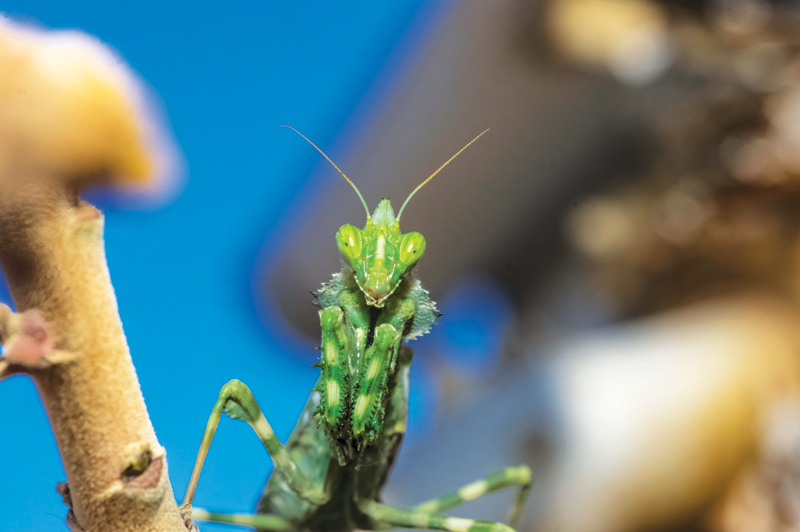

Insects, animals fascinate him dearly. And the Sultanate provides an excellent backdrop for this.
Muscat-based macro photographer Paul Manjooran Sebastian has devoted a good deal of his time to capture stunning macro photographic images.





Insects such as spiders, praying mantis, crickets, dragon flies, bees and reptiles such as the Sand Fish, Garden Lizards, dabb lizards provide the perfect backdrop in Al Wusta which is known for its rich bio-diversity.
Fascinated by macro photography’s mystic world, Paul says it was ‘expressive and soulful’ after his first visit to the famed wild life reserve in April this year.

In macro photography one does not pay attention to what we cannot normally view with our own eyes, he says.
Stealth and patience is imperative to get closer to these master escape artists. Early morning hours are the best time to increase your chances to find subjects for macro photography in Al Wusta.
Macro photography according to him is a magical world that mesmerises him each time.
“It surely is a test of patience but the results are overwhelming and beautiful,” Paul says as macro photography is a combination of meditation and solace that calms him down.
It was his dad Sebastian who introduced him to the world of photography when Paul was 15-years-old. Never, did he realise how he later embraced it as an art and craft form. He is focused to develop a clearly defined style by creating simplistic images rooted to basic elements.
A HSE professional with Arabian Industries Projects, Paul attempts to give his frames more sway by paying attention to detail, picture them in a manner that draws the attention of the viewer towards the subject in the photograph.
Paul says his love for wildlife, macros, abstract, animal portraits and outdoor portfolio shoots supersedes other types of photography.
“I consciously refrain from confining myself to any specific type. Any opportunity to photograph is a learning curve and is always welcome; opportunity to photograph is a prospect that must always be delivered with the best of creative potential and inventive promise,” he explains.
“Things we don’t pay attention to or what we cannot normally see with our own eyes. Macro world is expressive and soulful. Spiders, specifically jumping spiders or Salticidae are amazing subjects,” he mentions.
There are not many macro photographers in comparison to architectural photography in Oman.
Macro photography, according to him is definitely a style that is not embraced across the world. It requires sharp camera operation skills and most importantly patience and perseverance.
Wadi Shab, Qurum Natural Park, Jabal Shams and Salalah are promising places to spot spectacular subjects for macro photography.
Oman’s national animal, Arabian Oryx, looks promising at the Arabian Oryx Sanctuary, Al Wusta Wildlife Reserve.
The Office of Conservation of Environment under Diwan of Royal Court plays a significant role towards the protection and conservation of the majestic ‘Al Maha’.
Paul notes further that consistent and relentless pursuit of the ministry led to successful breeding as well as re-introduction of Oryx into the wild. Competent biologists and experienced doctors at the reserve under the direct supervision of the Diwan of Royal Court plays an appreciable role towards nurturing and protecting these threatened animals.
He notes that the wildlife reserve is a heaven for ecologists, geologists and photographers interested in wildlife, landscapes, birding as well as astrophotography.
An overnight stay at Al Wusta wildlife reserve is worth the long drive and the warm hospitality in the camp by guided safaris overwhelms visitors in the true spirit of eco-tourism.
The reserve has a unique biodiversity, one of its kind in the Sultanate. It’s also home for many other rare wildlife like the Reem (Sand Gazelle), Ibex, Arabian Gazelle and host to many birds and desert dwelling reptiles, he notes.
Poaching from the local community poses a big challenge for the rangers at Jiddat al Harasis. Rangers play an important role to keep illegal poaching at bay. They have been actively patrolling the vast terrain for long and their and hard work seems to have paid off.
Paul has documented his work on a blog at colour-doctor.blogspot.com.
His final word on photography: ‘The picture freezes that fraction of present and before you realise it has already transformed light and colour into another past moment. It’s a combination of meditation and solace that calms me down.’
Oman Observer is now on the WhatsApp channel. Click here



